#100witches
Photo


Be sure to fly your brooms to the polls tomorrow, November 6th. Voting is a radical act of magic, and a tangible way to assert your autonomy. Be a witch, cast a vote.
#witch#witches#witchcraft#witchblr#100witches#pagan#wiccan#magic#occult#coven#vote#voting#election#election day#midterms
10K notes
·
View notes
Photo

@100witches @darcula-dreams @basil-witch @hakufarm @scortched-desire @baphobae @fancyninjaneko @darkwitchdeathkiss @4dfarm @uailogenos @moonboundwitch @calypsocovewitch
Ray-Ban Sunglasses
10 notes
·
View notes
Text
So, witchy community: I've been wondering this for a few days, but no one on reddit will give me a real answer. How can we in the general occult community support practitioners of closed practices (Kabala, Hoodoo, Voodoo, etc)? I mean beyond not muscling our way into their belief systems and so on.
I mean, if we see a store dedicated to a specific practice and it has really cool stuff, is it alright to even go into that store (as long as we don't buy anything specific to their practice, like if we find generic occult stuff it would be ok to buy right?) Like, we want to support them, and we want them to survive (financially, emotionally, etc), but we don't want to over step.
Also, I and others like learning about other belief systems and practices, but it doesn't mean I plan to incorporate anything from those closed communities.
So, how do we support and interact with practitioners of closed communities without being rude or unethical?
@witchyshitposting @girlgoddess9 @wildechangeling @teakip @lesfleursdedivinite @ohthewitchery @growing-yet-into-magic @afrocentric-divination @shunned-from-cult-of-dionysus @hoodooyousee @enchantingmoonshark @darknessblackness @manic-witchbitch-poc @sunlitruler @systlin @unfriendlyblackwitch @heatherwitch @witches-ofcolor @queenofslash @themanicnami @kingrathalos @katrianakitten @handy-sigil-pop-spells @bibliophilicwitch @recreationalwitchcraft @chaotichail @touchedbythegreenman @stormbornwitch @stormwaterwitch @strangesigils @thewitchofthenorse @hestiastrashwitch @diamondrosegalaxy @witchy-words @witchy-momiji-kun @100witches @sweetsapphirewitch @the-darkest-of-lights @the-witchy-housewife @beewitch @mamahealing @crystalsofthemyst @eclecticwitchdiaries @blue-haze-dreams @bumpkinwitch @corvidtarot @heathen-boyscout @witchyhera @heavymetalpagan @will-o-the-witch @desertwitchdesigns (please add more people to bring into the convo)
116 notes
·
View notes
Photo

@ronnykhalil @alfredsommerfeld @wolfattitude @vengefultragedy @qwertyaad @iluvdannydevito @scentedsoulcoprascal @myownvibe @stupidstupidstupids @afragiledaizy @moryen @mysoftsidex @culturecontrol17 @artslut1 @moncheriimgypsyrose-blog @100witches @water-x-witch @willowofoak @pausadamente @howtoneverbefoundagain-blog @female-simon-lewis @beeskneeswitchery @yeahliketheplant @imanevilgenius @mmercurian @vulvamancy @effervescentwoman @dormi-veglia @pixyliv @h-sam121
Ray-Ban Sunglasses
3 notes
·
View notes
Text
20 Questions tag
Saturday November,3.2018
So thank you to the amazing @themagickcat for tagging me!!! 💝
Rules: answer the twenty questions, then tag twenty people you want to get to know better
nicknames: Sunny, Eli, or Ursus
height: 6'2
orientation: Cis-gender Homosexual
favorite fruit: Strawberries, Apples, Lemons (do those count?) and many more!
Favorite season: My absolute favorite season is Autumn 🍁
Favorite Flower: That's a tough one! But I'd have to say sunflower because they gave me my witchy name!
Favorite scent: Rain, damp earth, pine needles, roses, Cinnamon and vanilla
Favorite color: again I'm guilty for taking after a sunflower. I looove the colors yellow, brown, and green.
Favorite animals: Another tough one. Hmmmm I'd have to say it's the Easter egg chicken!
Coffee, tea, or hot chocolate: Goodness another hard one! I love them all but I'd have to say tea because it doesn't upset my stomach and it's very useful.
Cats or dogs: Well both! But I lean a bit more towards cats but only like 1% more 😄.
Favorite fictional characters: Sabrina Spellman, Helda Spellman, Hermione Granger, Lotte Yanson, Sucy Manbavaran
Number of blankets you sleep with: only one really thick one in winter and a sheet in summer.
Dream trip: I'd love to just travel around the world visiting ancient sites and cities and maybe even discover one of my own.
Blog created: Hmm I think I created it in September of 2017 bit I'm not sure.
Number of followers: 41 followers
Random fact: I've always wanted to buy land and create my own city of just witches and stuff.
I'm tagging some of my followers: @butteryinnervoid @100witches @darkfyretheumbrawitch @demonlordoffuckingeverything @stormsdawnwitchshop @moongazingbeing @poudretteites @lirimaerspiritualgatherings @mossgothlesbian @gothicgladia @grimlilli @witchofswords @teenage-witch-boy-blog @healing-is-not-linear3690
4 notes
·
View notes
Text
OK, sorry not sorry for the reblog spam! I have been reblogging my faves from. The @100witches project. Make sure to go check it out!
A bit of modern witchcraft history, a but of ancient witchcraft history, a bit of folklore, a bit of pop culture witches... A lot of things to learn and read before Halloween :p
1 note
·
View note
Text
0 notes
Text
1- Hecate

1- Hecate
Greek Titan of Witches, Witchcraft, Sorcery, and Crossroads.
When I first began this project, I knew that I wanted to end with Hecate. She is simultaneously the final and the first, our alpha and omega of Witchcraft. She dominates popular witch lore, but you would never know it as she resides in the shadows, side plots, and brief mentions. Only when you seek her out does she reveal herself to you, lighting your path while casting shadows and ghosts. Many, if not all, modern Witches, Pagans, and Wiccans see Hecate as a Goddess of Witches, amongst other appropriate attributes, and continue her worship and reverence now several thousand years ongoing.
As is the case with most of Greek Mythology, Hecate has multiple origin myths and genealogies. This is most likely the result of her originating outside of the Greeks, and being adapted and merged with the existing pantheon. Most traditions have Hecate as the daughter of the Titans Perses, titan of destruction, and Asteria, titan of falling stars and nocturnal prophecy. Hecate was their only child, and was able to retain her powers post Zeus’ coup as she helped him fight the Giants. As child of Asteria, her grandmother was the Titan of the Moon, Phoebe, and her cousin was Olympian lunar all-star Artemis.
There are various stories in which Hecate plays a part. Her most notable and appropriate for this time of year, however, is her integral role in assisting Demeter’s search for her beloved daughter, Persephone. Upon Persephone’s decent into Hades, Hecate, through the light of her torches, helped Demeter discover her daughter in the underworld. As such, Hecate has become a chthonic Goddess, and Persephone’s yearly attendant and psychopomp to the underworld. Her position as gatekeeper and guide to Hades solidifies many of her numerous attributes.
Hecate is associated with ghosts, necromancy, and magic. She is identified with crossroads, torches, and dark hounds. She was a common household deity for the Athenian—her shrines placed in doorways and city gates to both protect from restless spirits and bestow blessings and safe passage. Her worship and cult was as extensive as her various attributes, with temples and shrines scattered across the Mediterranean. As a key figure in the Persephone saga, Hecate was integral in the ancient Eleusinian Mysteries, impacting secret societies and occult rituals to this day.
Out of all her characteristics, her association with the crossroads is perhaps the most pertinent to my series. Most often, we think of crossroads as the intersection of two roads, yielding four directions. This was not always the case, however, as it was more common to have a proverbial ‘fork in the road’, yielding three directions. This is the kind of crossroads in which Hecate resides. Her statues depict her in triplicity, forearms outstretched, holding torches, keys, serpents, daggers, etc. One face in each direction, Hecate is the arbiter of passages, and in this way is the consort of the God Hermes.
Hecate is one of the original Triple Goddesses of Witchcraft, if not the primordial one. Her triplicity has defined much of Modern Pagan theology, with her stance representing the three phases of the moon, Waxing, Full, and Waning (Maiden, Mother, Crone respectively). Her mythological genealogy as the granddaughter of Phoebe and cousin to Artemis has yielded Hecate as a Goddess of the Moon in her own right, most often known as the unseen phase of the moon, the New Moon (however she is just as often associated with all moon phases). In Greek/Roman Mythology, Hecate joins many lunar goddesses in addition to Phoebe and Artemis, including Selene and Diana. The five were often conflated, confused, and worshiped both in tandem and in conflict. This ever shifting, impossible to pin down, lunar association echos her transient nature of existing in the shadows.
Hecate is both mysterious and severe. Her face is hidden behind her torches, or on the dark side of the moon, however her presence is a constant. She is life, death, and rebirth. She is both light and dark magic. She was beloved in her association with rites of passage like childbirth, and feared in her role as Queen of Shades, present at the final rite of passage, death. Her nature has permeated my entire series in such a profound and indescribable way, I can only show you:
#93: Lilith— often worshiped by modern Pagans in tandem with Hecate
#92: Circe: Daughter of Hecate
#89, #54, #39: Bewitched: A common expression “For Hecate’s Sake!” Occurs throughout the show.
#79: Aradia: Daughter of Lucifer and Diana. Often seen as the daughter of an amalgamated Diana-Hecate.
#70: Medea: Priestess of Hecate
#67: Charmed: The Halliwell Sisters: Appears in the episode “The Wedding from Hell”
#56: Ceridwen: Often worshiped in tandem with Hecate as Dark Mothers by modern Pagans. .
#52, #27: Practical Magic: The necromancy ritual the Owen’s Sisters perform, albeit pronounced incorrectly. “Black as night, erase death from our sight. White as light, Mighty Hecate make it right.”
#10: Willow Rosenberg: Buffy the Vampire Slayer. Mentioned in several episodes and referred to as “Queen and Protectress of Witches.”
#7: American Horror Story: Coven: Supreme Fiona Goode invokes Hecate “Come to me Hecate, Mother of Angels, Cosmic World Soul.”
#5: The Weird Sisters: Macbeth: Hecate is their master
This list is pretty fitting for a Goddess whose name etymologically may mean “she that operates from afar.” She is seldom a central figure or even visible, however witches from the Owens to the Goodes, from Willow Rosenberg to Endora, invoke her name and ask for her spirit, guidance, and presence. Hecate, in many ways, is both the first witch, and the last. She is our alpha and omega. She is the embodiment of power and strength. As a Goddess of Witchcraft, she does not merely exist in the margins of society like the rest of us—She is the margin itself.
Hail Hecate.
“Hecate, Cerridwen. Dark Mother take us in. Hecate, Cerridwen. Let us be reborn.”
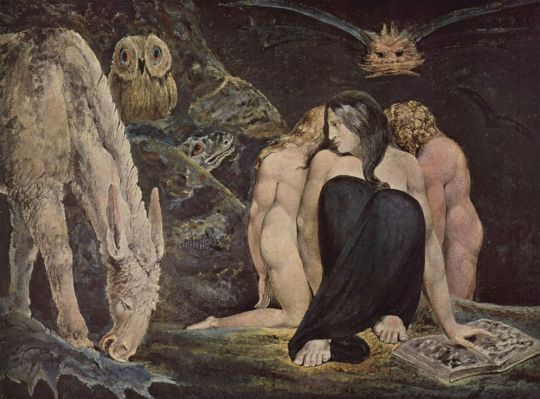
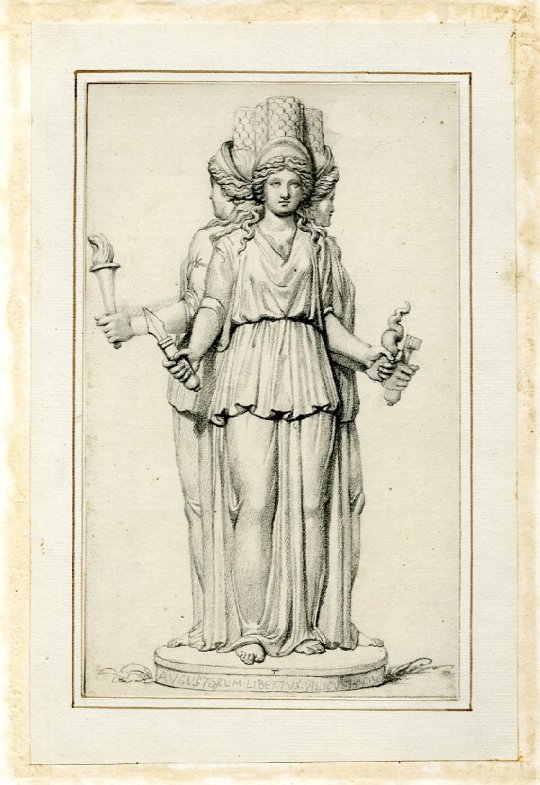


#witch#witches#witchblr#witchcraft#100witches#halloween#samhain#pagan#paganism#wicca#coven#magic#occult#Hecate#Titan#Goddess#Greek Mythology#Mythology
9K notes
·
View notes
Photo

@100witches @darcula-dreams @basil-witch @hakufarm @scortched-desire @baphobae @fancyninjaneko @darkwitchdeathkiss @4dfarm @uailogenos @moonboundwitch @calypsocovewitch
Ray-Ban Sunglasses
0 notes
Text
One Hundred Witches
🖤💜Master Post💜🖤
A handy resource guide of 100+ witches from across history, literature, mythology, and pop culture. Not all of these women would have identified as such, but many were persecuted and marginalized in the name thereof. This is not complete, nor comprehensive. I will be adding to it as I continue the project, as there are many, many witches I have yet to include.
📜Witches from History📜
Hypatia (350/370- 415)
Joan of Arc (1412-1431)
Mother Shipton (1488-1561)
Agnes Waterhouse (1503-1566)
Agnes Sampson (1591)
Alse Young (1600-1647)
Tituba
Catherine Deshayes (1640-1680)
🗄Historical Compilations🗄
In Memoriam
Red Haired Witches
📖Witches from Modern History📖
Occultists🔮
Pamela Coleman Smith
Dion Fortune
Helena Blavatsky
Marie Laveau*
Mothers of Modern Witchcraft/Wicca🕯
Doreen Valiente
Monique Wilson
Maxine Sanders
Edith Woodford-Grimes
Janet Farrar
Eleanor Bone
Margaret Murray
Vivianne Crowley
Old Dorothy Clutterbuck
Lois Bourne
Patricia Crowther
Sybil Leek
American Witches and Pagan Elders🌿
Margot Adler
Starhawk
Selena Fox
Silver RavenWolf
Zsuzsanna Budapest
Laurie Cabot
Jeane Dixon
Stevie Nicks
W.I.T.C.H.*
🎥Witches from Film/Literature📚
Bedknobs and Broomsticks
Eglantine Price
Bell, Book, and Candle
Gillian Holroyd
The Witches of Eastwick
Alexandra Medford, Jane Spofford, Sukie Ridgemont
Witches from Oz
Glinda
Mombi
Wicked Witch of the West
Witches from Narnia
Jadis, The White Witch
Witches from Harry Potter
Minverva McGonnogal
Bellatrix Lestrange
Hermione Granger*
Animated Disney Witches
Ursula
Maleficent
Madam Mim
Grimhilde (The Evil Queen)
Practical Magic
Sally and Gillian Owens
Frances and Bridget Owens
The Addams Family
Grandmama Addams
Hocus Pocus
The Sanderson Sisters: Winifred, Mary, Sarah
Wicker Man
Miss Rose
Witches
Grand High Witch
Rosemary’s Baby
Minnie Castavet
The Craft
Nancy Downs/Fairuza Balk
Rachel True
The VVITCH
Thomasin*
Miyazaki Witches
Kiki
Yubaba and Zeniba*
Pirates of the Caribbean
Tia Dalma
Macbeth
The Weird Sisters/Three Witches*
📺Witches from Television📺
Bewitched
Samantha Stephens
Endora
Aunt Clara
Sabrina The Teenage Witch
Sabrina Spellman
Hilda and Zelda Spellman
Game of Thrones
Melisandre
The Magicians
Julia Wicker, Margo Hanson, Alice Quinn, Kady Orloff-Diaz
Penny Dreadful
Vanessa Ives
Joan Clayton
Charmed
The Halliwell Sisters: Phoebe, Prue, Piper, and Paige.
Cartoons
Witch Hazel (Donald Duck)
Witch Hazel (Looney Tunes)
Halloweentown
Agatha Cromwell
Buffy the Vampire Slayer
Willow Rosenberg
American Horror Story: Coven
Miss Robichaux’s Academy*
🏺Witches from Mythology/Folklore🏺
Biblical
The Witch of Endor
Lilith
Greek
Cassandra
Calypso
Circe
Medea
The Graeae/ The Moirai
Hecate
British Folklore
Jenny Greenteeth/Nelly Longarms/ Peg Powler
Black Annis
Allison Gross
Arthurian Legend
Morgan le Fay
Nimue: The Lady of the Lake
Italian Folklore
Aradia
La Befana
Celtic Mythology
Ceridwen
Slavic Folklore
Baba Yaga
American Folklore
The Bell Witch
📝Witches from Children’s Books📝
Room on the Broom
Witch
Strega Nona
Strega Nona
Mother Goose
Mother Goose
📰Witches from Comic Series📰
Wendy the Good Little Witch
Wendy
X-Men/Avengers
Scarlet Witch (Wanda Maximoff)
*denotes I was unable to complete their original post. I will be returning to these and adding a full analysis.
This list stems from my original project that I did for the 100 days before Halloween 2018. The nature of the project I discuss in my 1st post, which happened to be The Witch of Endor. I will be adding dozens other witches I did not get to in the initial 100 over time, and plan on producing a second series for male witches. Stay Tuned!
On the horizon
Bonnie Bennett (Vampire Diaries)
Witch of the Waste (Howl’s Moving Castle)
Mary Poppins
Louise Miller (Teen Witch)
#witch#witches#witchblr#witchcraft#100witches#coven#magic#occult#wicca#wiccan#pagan#paganism#the craft#modern witchcraft#mythology
3K notes
·
View notes
Text
21- Strega Nona
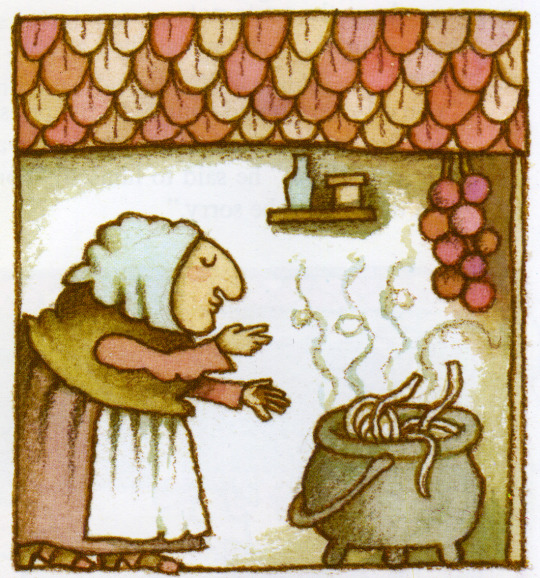
21- Strega Nona (1975)
Taking a mental health break from hyper-analysis to offer this pasta witch.
Strega Nona is the titular character behind the children’s book of the same name written by Tomie dePaola. The story is about an old witch who is renowned in her village for her remedies and matchmaking abilities. She hires a young helper named Big Anthony to assist her in her work as she is getting too old to work alone. One day, Strega Nona is cooking a magic pasta. Big Anthony doesn’t pay close enough attention, however, and while he sees Strega Nona singing a magic spell to produce the pasta, he misses the necessary spellcraft required to stop the production. The result is that macaroni noodles flood the entire town as the spell gets carried away. Strega Nona gives Anthony a fork saying “the punishment must fit the crime,” and makes him eat all of the pasta. The two characters, Strega Nona and Big Anthony, have appeared in nearly a dozen additional books by dePaola, however the first is the most well known, winning several awards for children’s picture books.
The moral of the story? Pay Attention. I love any time a witch, especially an older one, is shown in a positive light in a children’s tale. Even in a children’s book, the story conveys the wisdom and magic associated with witches, and goes so far as making Strega Nona a moral compass. She’s happy, kind, and well respected around town, the latter aspect greatly differentiating her from other witches in this series. While her personality is the inverse of the traditional witch, her physical appearance, as that of an old, frumpy, squat, and big nosed woman does fit the standard image. She’s shown with a cauldron (pasta pot) and various animal familiars surrounding her. Similar to the Witch from Room on a Broom (#75), La Befana (#68), and even Eglantine Price (#97), Strega Nona joins the ranks of positive witches geared towards and beloved by children.

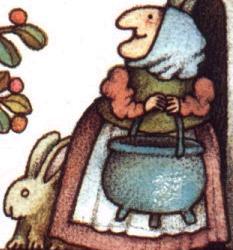

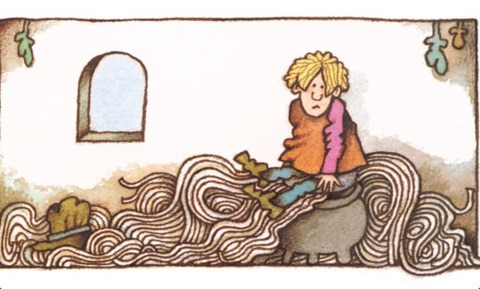

#witch#witches#witchblr#witchcraft#100witches#halloween#samhain#pagan#paganism#wicca#coven#magic#occult#strega nona#tomie depaola#big anthony#pasta
4K notes
·
View notes
Text
18- Baba Yaga

18- Baba Yaga (Slavic Folklore).
This classic witch originates from Russian mythology and Slavic fairytales. Baba Yaga appears in various legends, often occupying the role of the witch residing deep in the woods that the main character must interact and barter with. She is the predecessor to witches like those found in the fairy tales of Charles Perrault, as well as those found in the Grimm Brothers’ works. Baba Yaga retains many unique characterizations and attributes not found in any other witch, however, making her singularly iconic.
Baba Yaga is described as a hideous, deformed, and vicious looking woman, resembling the classic hag archetype. In some versions of her story, Baba Yaga is not one, but three sisters all named Baba Yaga, each sister being older than the next. In this way, Baba Yaga is intimately connected to both The Graeae and the Moirai (#64), and illustrates the triple goddess. More specifically, Baba Yaga is a representation of the Crone phase, and is associated with death, darkness, and winter. Her function in the legends she appears in further matches this archetype, as she “may help or hinder” the characters that beseech her. She stands at the crossroads of death and mystery, allowing some to pass unscathed.
Baba Yaga is best known for two specific attributes that have defined witch iconography and contributed to Baba Yaga’s mythological uniqueness. Her residence, as well as her choice of aerial transportation, are some of the most distinctive out of any witch in this series. While most fairy tale and fictional witches fly through the sky on their iconic brooms, Baba Yaga sits her little old body inside a mortar, and steers her “spice-craft” with a pestle as rudder. The iconography and symbolic nature of this, with the mortar representing the divine feminine/womb and the pestle representing the divine masculine/phallus, shows Baba Yaga to be a character in balance with nature, called by some as a “phallic mother”. Other depictions show Baba Yaga riding through the sky in a cauldron, further solidifying the relationships between witches and their love of these cast iron pots (Ceridwen #56).
Baba Yaga’s hut is similarly iconic and unique, and has influenced centuries of witch-lore. Her house sits upon a pair of chicken legs (sometimes just a single claw). It jumps in the air and spins around, constantly moving from place to place and turning direction. I’ve seen dozens of references and depictions of witch-homes on chicken legs, but they are all imitations of Baba Yaga’s. Her yard is surrounded by a fence impaled with skulls, furthering her placement at the gates of death and dying. Her fowl-legged home appears in the earliest references to Baba Yaga, so whatever this strange attribute means, its intimately connected to her being.
The etymological roots and significance of her name are disputed. It’s generally agreed that the Baba is the same root as babushka, meaning grandmother. Other roots in Old Russian bring the shared meaning of Baba to “midwife, sorceress, and fortune teller”. The Yaga part of her name is less conclusive, however, with no root universally agreed upon. Some believe it has its origin in “serpent, snake”, while others see it from anything from “horror”, “witch”, “evil woman”, and “pain and worry”. In this way, Baba Yaga principally means Grandmother Witch, the Slavic etymological counterpart to the Italian version, Strega Nona (#21). Both Strega Nona and Baba Yaga are examples of the tradition of witch names ending in an A, with Baba Yaga perhaps being the earliest (See: Hilda and Zelda #36, Sabrina #62, Samantha/Endora/Clara #s 89/54/39, Glinda 76, et. al.).
In modern times, Baba Yaga has become more of a bogeyman character, used to scared children into good behavior. She’s described as flying through the air in her cauldron, stealing kids away to eat them. She is often shown as a consort to the personification of Death, sealing her Crone status. This association expands beyond the original source material for her, however, and while she is now often seen as evil, she was more thoroughly understood as being morally ambiguous. Baba Yaga’s ultimate good or evil was brought out by the decisions and/or actions of the main character in the fairy tale who interacted with her, serving as a reminder of caution, thoughtfulness, and sure-footedness.
Baba Yaga remains one of the classic hag witches from world folklore and mythology. I am absolutely enamored with her flying around in a Mortar/Pestle, as I find her to be one of the prototypes for modern Kitchen Witch iconography. Her witch residence goes down in history as one of the most unique, rivaled only by the far removed castles of witch/queens. I find her manifestation as three Baba Yagas, each living in a chicken-clawed home, to be her most allegorical and fascinating. In this way, Baba Yaga illustrates the singularity and unity of the Triple Goddess into one character, promoting the final stage of Crone as the most pertinent to the archetypes of witchcraft.
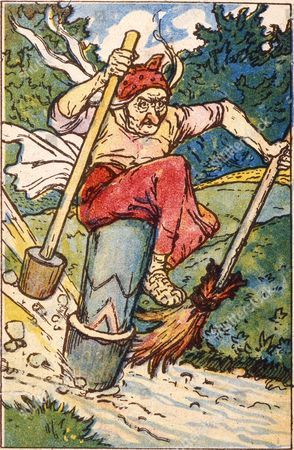

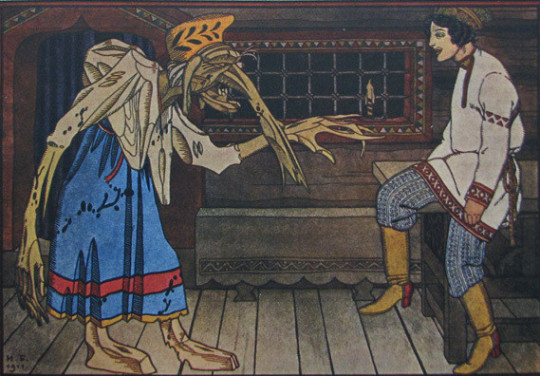
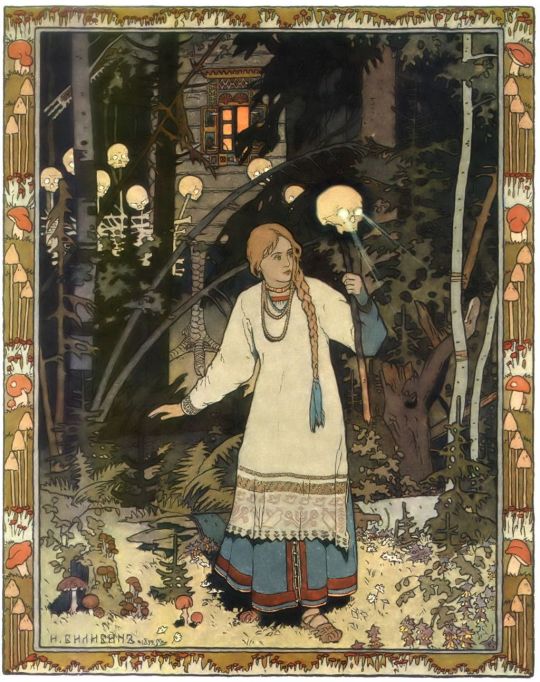

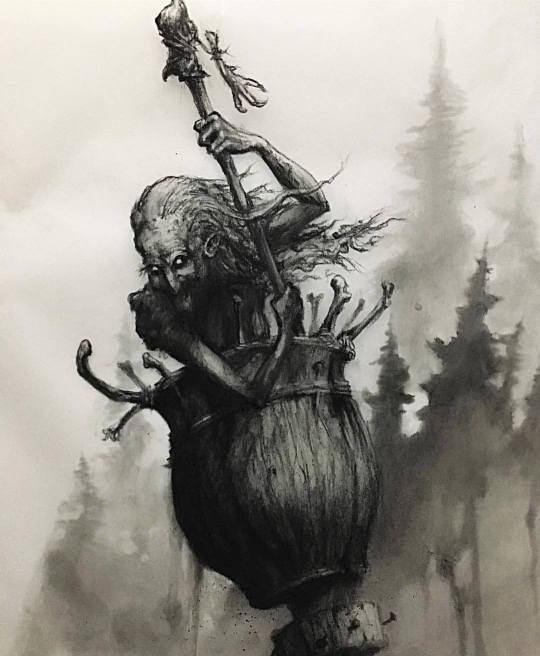

#witch#witches#witchblr#witchcraft#100witches#halloween#samhain#pagan#paganism#wicca#coven#magic#occult#baba yaga#mortar and pestle#Russian folklore#Slavic Folklore#Folklore#mythology
4K notes
·
View notes
Text
4- Thomasin

4- Thomasin (Anya Taylor-Joy). The Witch (2015).
“Wouldst thou like to live deliciously?”
The Witch is hands down one of my favorite movies on the subject of witchcraft. There is so much to it, I’ll certainly need to revisit it at a later date. The film conveys a classic “New England folktale” in what is perhaps the most beautiful and visually appealing way, perfectly capturing the aesthetic power of the landscape and season that has redefined witchcraft in America. Bringing together imagery and characteristics from centuries of witch-lore and hysteria, the film illustrates the psychological breakdown that was likely occurring in the minds of early American settlers and Europeans throughout the 1600s. The VVITCH is a modern interpretation of the fears and paranoia latent in the human mind, showing how the figure of a witch has manifested itself deep in the woods of the psyche of humanity. Whether or not the witch is ever there is debatable, but the actions taken to prevent and further marginalize her in their minds only give her power and strength.
Through the evolution/deconstruction of the main character Thomasin, we see the journey of a young girl into adulthood. Challenging the societal norms of the time and learning how to express her burgeoning sexuality, long hair, and freewill, Thomasin perfectly illustrates how witchcraft and the figure of a witch is used to depict one’s entrance into adulthood. Anya Taylor-Joy adds an unparalleled dimension to this character, yielding what is perhaps one of my most recent favorite witches. Through the actions of her and her family, Thomasin becomes what they feared most—another solitary female deep in the woods.
The movie as a whole conveys dozens of classic witch legends, my favorite of course being the dark lord himself, Black Phillip. The Sabbatical Goat has appeared alongside of witches for centuries, and is an archetype himself that would require extensive explication in His own Rite. If you haven’t seen this movie yet, I strongly encourage it become a staple in your witchy movie list. Track the slow and steady progression of women’s hair throughout the film, the journey from tight bonnets to eventual wild tresses is integral in understanding the constraints and freedoms that give rise to the witch.
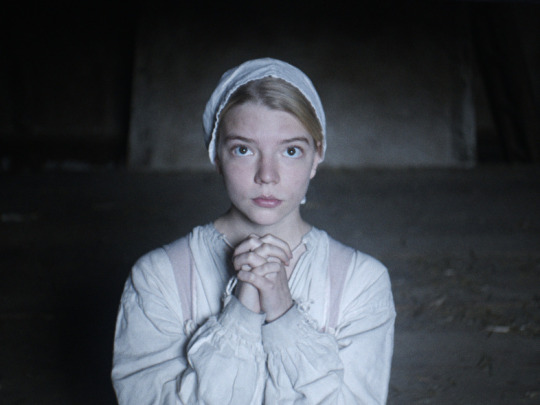
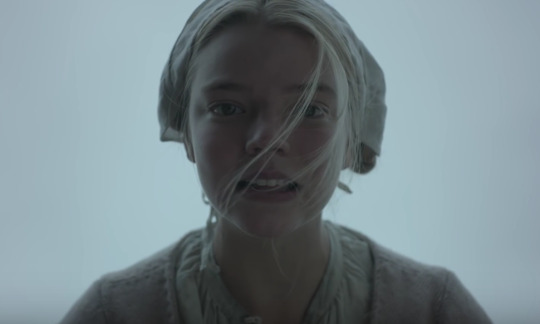




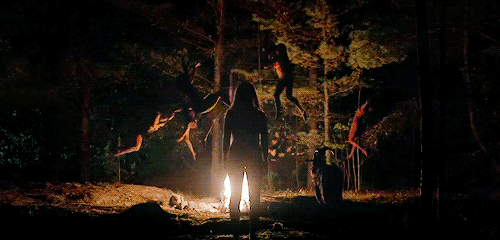
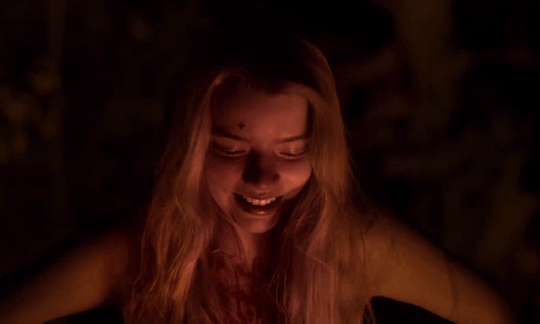
#witch#witches#witchblr#witchcraft#100witches#halloween#pagan#paganism#wicca#coven#magic#occult#the witch#the vvitch#thomasin#a new england folktale#new england#folktale#anya taylor-joy
2K notes
·
View notes
Text
2- Nancy Downs (Fairuza Balk)
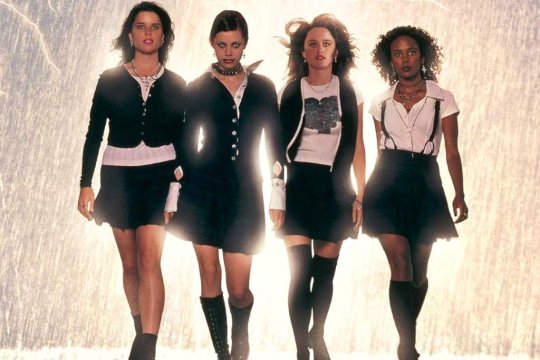
2- Nancy Downs (Fairuza Balk). The Craft (1996).
I can’t tell if I love this movie because it holds a special place of witch nostalgia in my cold black heart, or if its actually a freaking great movie. I try to watch it several times a year, and it keeps just getting better and better. It is unquestioningly one of my all-time favorite movies about witchcraft, and conveys the practices of real witches in a way somewhat unparalleled in cinema. Perhaps this has to do with the fact that the film employed a Dianic Priestess and Information Officer of the Covenant of the Goddess (a multi-denominational Wiccan collective), who sought to couch realness and truths inside a medium she knew would nevertheless have grandiose Hollywood overtones. Or perhaps it has to do with the fact that witch icon Fairuza Balk is cast in an empowering, albeit tragic, character. Either way, The Craft, and Fairuza Balk, fundamentally shaped my witch-identity, and that of an entire generation of young witches, Pagans, and Wiccans alike.
The plot of the movie conveys dozens of classic themes about witchcraft. It begins with a group of social outcasts who reside in the margins of the hallways. They come from diverse backgrounds and various tribulations which have made them feel powerless. On one side, you have Rochelle (Rachel True #40) and her confrontations with racism, prejudice, and bigotry. On another, you have Bonnie (Neve Campbell) and her physical ailments and scars that, especially in high school, are perceived of as grotesque and ugly. On a third side, lies our dear Nancy, her alcoholic mother, abusive stepfather, sexual proclivity, and (as Rochelle puts it), her innate destiny as white trash. The three young girls, feeling powerless in their world, discover witchcraft as a means for gaining confidence, power, and protection. Witchcraft acts as a way to interpret the chaos around them, and can be used as an arbiter of justice against the world that has forsaken them. I get an all encompassing sense of deja vu every time I see the scenes of them walking down the hallways of their school, not just because I’ve seen this movie a trillion times, but because my friends and I were those kids. We all had our problems and difficulties, and together found various forms of witchcraft, ceremonial magic, and other occult traditions as a means to understand the world around us.
You’d think by the length of this post already that we’d be halfway into the movie, but it hasn’t even started yet. While I’ve spoken at length in this series as to the power of three (Charmed #67, the Graeae/Moirai #64, the Weird Sisters #5, et. al), modern witchcraft and most denominations of Wicca continue this ever building strength in numbers to a notion of four-ness. The aforementioned girls, while attempting to practice magic, are held back as their circle in incomplete. Ritual witchcraft often has a Calling of the Corners/Quarters, East, South, West, North, which requires the participation of four practitioners. This is the actual plot of the movie, as the fourth arrives as another ostracized woman. Sarah Bailey (Robin Tunney) transfers in to the school. As if being a new kid wasn’t tragic enough, her mother has died, and Sarah now struggles with depression and suicide. Sarah is a perfect candidate for a new initiate into witchcraft— she too needs to find strength and order in the world around her.
Now complete, the coven truly begins to explore witchcraft and magic in earnest. Rochelle, as a swimmer and character who is surprisingly malleable and soft-hearted, takes the West—water. Bonnie, who suffers from tragic burn scares and self confidence issues, takes up the South—fire. Sarah, whose magic stems from her mother and hereditary witchcraft, takes up the North—earth. And Nancy, crazy, crazy Nancy, whose own imagination is her only limit, takes up the East—air. Together, the girls perform some of my favorite cinematic interpretations of actual magic. The classic “we are the weirdos” forest scene (“In perfect love, in perfect trust”), as well as the notorious beach invocation scene, are truly unrivaled interpretations of actual witchcraft and Wiccan rituals.
There are dozens of undercurrents of classic witch themes throughout this movie. The juxtaposition between natural, hereditary witches like Sarah, and learned occultists like Nancy, illustrates the differences in witch-lore between magic/power being innate versus acquired. While both are true (magic can be both natural and learned), this tension between those with magic and those who learn magic is reminiscent of a kind of Promethean battle for power and strength—who can steal the fire first. In the case with Sarah and Nancy, the hereditary witch ultimately wins (ugh they usually do). However, this is not due to increased ability or a genetic superiority/predisposition to magic. Instead, Sarah becomes the victor due to purity of heart and intent. The movie is wrought with the philosophy that magic is neither good nor bad, it is the intent and the person who can manipulate magic in either direction. As the bomb-ass witch in the occult shop, Lirio, puts it—Nancy takes it to a dark place.
I could certainly do a post on Sarah, and perhaps that could come after this 100. She is a great representation of a witch, from the strength of her mother to her defeating her own sisters who have turned on her. Sarah’s magic is some of the strongest we see, most notably her final binding of Nancy. In another great representation of Sympathetic Magic, we see Sarah perform a magical binding to prevent Nancy from doing harm to others or herself. By wrapping a ribbon around an image of Nancy while repeating the mantra, Sarah hopes to stop Nancy from her (self) destructive behavior. Sarah repeats the binding in their final fight scene, and in a moment of script writing brilliance, Nancy is thus fated to being truly bound to a bed in a psychiatric ward at the end of the movie. Unfortunately Nancy becomes institutionalized as she’s flown too close to the sun, but she is unquestioningly unable to do harm to anyone while in that padded room.
So, WHY NANCY? As a character, she is one of the most bad ass witches I can think of. Despite her flaws, she has a strong sense of morality and is fiercely protective of her sisters. She uses witchcraft to punish a sexual predator (….full transparency here, she kills him…) and sees power as a means of uplifting both herself and others. Her tragic flaw comes in her full and total submission to her religious philosophy (Minnie Castavet #19 and Bellatrix Lestrange #15). She is unfortunately unable to control herself once she realizes her full power, as she has invoked all the power of Manon*. Nancy illustrates the journey of many witches, from disenfranchised outcast, to an empowered and autonomous woman, to, yet again, a woman suffering from a mental health crisis. Solidifying The Craft in its explication of witch archetypes, Nancy conveys the long history of witchcraft in a single character.
BUT FAIRUZA?!
I can’t think of another actor who has done as much for witch-lore as Fairuza Balk. In addition to her role in The Craft, Fairuza has appeared as Dorothy Gale in Return to Oz (1985, mentioned with Mombi #48), as Mildred Hubble in The Worst Witch, as well as dozens of other, non witch related roles. Fairuza’s mother studied Egyptian, Turkish, and Moroccan traditional dance, and her father is allegedly of Romani and Cherokee ancestry. Fairuza has been acting since she was a young girl, and continues her career as a musician and artist. A quick visit to her website reveals that she sells and designs custom sigils, symbols which are imbued with certain magical principles. In many ways reminiscent of witch-icon Stevie Nicks (#59), rumors have been circulating as to whether or not Fairuza is a practicing witch for decades. It didn’t help when stories circulated about the Dianic expert allegedly initiating one of the cast members of the film, or when Fairuza herself purchased an occult shop in L.A. She has stated that she first learned about witchcraft through The Craft, as so many of us in my generation have. Whether or not she’s out of the broom closet is besides the point. Fairuza remains one of my all time witch-icons, and I am greatly indebted to her for her work in furthering the tradition.
*Manon is perhaps one of my favorite parts of the movie. Due to the fact that the actors were performing actual Wiccan rituals, they were advised against using the name of an actual existent deity. Instead, Manon was created to prevent any actual invocation from occurring, especially by young fans wanting to mimic the film. Good thing too, because the aforementioned beach scene invocation resulted in swarms of bats, crashing waves extinguishing the candles in the scene, and a total loss of power on the set. No joke—that all actually happened. The description of Manon, too, as the Stadium and Field on which God and the Devil play football, is beautifully illustrative of much of Pagan theology.
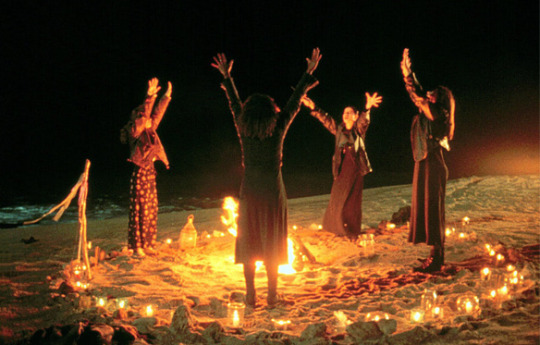
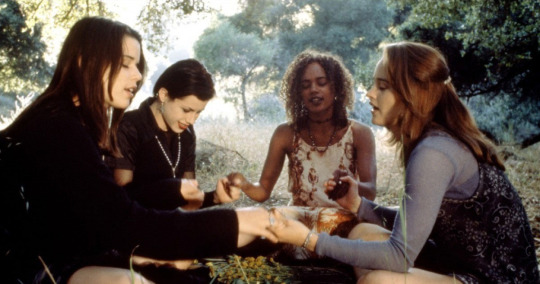



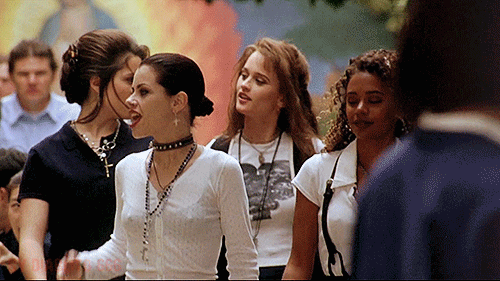
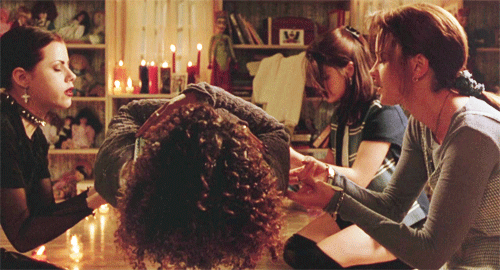

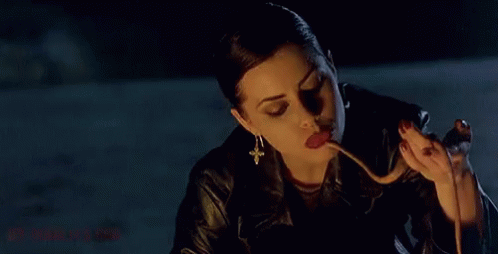
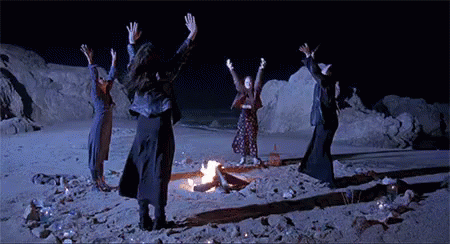
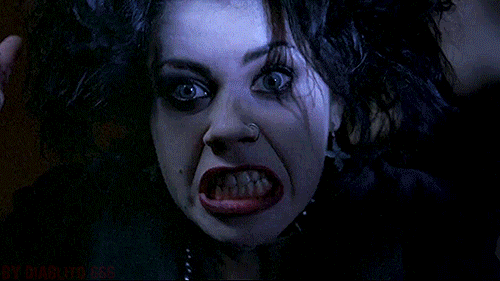
#witch#witches#witchblr#witchcraft#100witches#halloween#samhain#pagan#paganism#wicca#coven#magic#occult#the craft#fairuza balk#nancy downs#rachel true#neve cambell#robin tunney#manon
1K notes
·
View notes
Text
FPN
I have to say, I’m quite surprised none of my content has been flagged yet. I have nipples all over the place. I know the censorship is coming.
I joined Tumblr knowing that this was a safe place I could share photos of witches that often get censored on other platforms. Nudity, and the sanctity of the female form, is a fundamental aspect of my religion, philosophy, and tradition.
@staff this isn’t just censorship, it’s persecution. It’s xenophobia. It’s the arbitrary preservation of the arcane fear of women and female autonomy. Wtf is a female presenting nipple? This is absurd.
To those of my followers who are worrying about their blogs and the continuation of their safe space, I want you to know that I see you, and I am here for you. We will be okay, and will find a way and platform to persevere on.
#witch#witchblr#witchcraft#pagan#coven#100witches#occult#paganism#magic#wicca#female presenting nipple
547 notes
·
View notes
Text
10- Willow Rosenberg

10- Willow Rosenberg (Alyson Hannigan). Buffy the Vampire Slayer (1997-2003).
Every once in a while you encounter a television character who is so profound and iconic that she not only speaks for a generation, but gives voice and visibility to a population that, until her, was largely unrepresented in pop culture. One such character is unquestioningly Willow from Buffy the Vampire Slayer, a late 90s supernatural drama TV series. While there are several other witches in the Buffyverse, perhaps none are as filled to be brim with archetypical and allegorical significance as the young Willow Rosenberg.
From the beginning of the series, Willow is mousy, shy, and unconfident, serving as a mirror opposite to the outgoing and charismatic Buffy, played by Sarah Michelle Gellar. She has a natural proclivity towards magic, and as the series progresses, she becomes more and more adept in witchcraft and the ritual arts. In a way reminiscent of young witches like Kiki (#66) and Sabrina Spellman (#62), Willow’s self confidence and assertiveness builds in tandem with her increased magical abilities and proficiency with witchcraft—as her power builds, so does her self esteem and sense of self worth. In this way, Willow continues a long legacy of a primary function of witchcraft, namely to empower and encourage young women as they enter adulthood and come to terms with their femininity, strength, and autonomy.
As the series continued, and Willow’s strength and ability grew, she went from being a lackluster sidekick to an empowered sorceress. Even though Willow became more of a central figure in the show, her predisposition towards—and natural habitat in—the margins of society continued to be explored. Through various subplots and episodes, Willow’s characteristic and representation of Otherness became highlighted. Her role as “Other” was used in multiple ways aside from her witch-identity, with several plots illustrating how it feels for young folk who just don’t fit in to a small town high school.
Willow’s Other-identity and cultural significance can be seen through the fact that, in addition to being a witch, she was Jewish. At the time of the show, Willow showed a favorable portrayal of Jewish women, a characterization which is often seen through negative stereotypes and antisemitism. While some have criticized how the show utilized her Jewishness, functioning primarily as a juxtaposition to an understood Christonormativity, she nevertheless gives airtime to the history of Jews-as-others. This cultural identity contributes to Willow’s outsider perspective in the show, again giving visibility to those in the audience who may not always find representation in pop culture. Willow is only the second Jewish witch from film/TV in my series, with the Scarlet Witch (Wanda Maximoff #17) being her only sister in both Judaism and Witchcraft (You could make the argument for 2/3rds of the Sanderson Sisters #25, however it is the actors and -not- the character-witches themselves that are Jewish).
The most pertinent and groundbreaking aspect of Willow’s character, that perfectly illustrates the metaphorical significance of witchcraft in depicting those who reside in the margins, is her sexual awakening. In the fourth season of Buffy, Willow falls in love with another witch, Tara Maclay. Their relationship would go on to become, not only one of the most positive relationships in Buffy, but one of the first lesbian relationships on television in America. Willow and Tara had a groundbreaking televised kiss in the fifth season, which was depicted in a radically different way than had often been shown in pop culture. Willow’s lesbian relationships were not over sexualized, exploitive, or used in a manipulative way to gain a ratings boost. Instead, Willow’s relationships were honest, sensual, and meaningful expressions of true love. Instead of focusing on a formalized “coming out” story, Willow and Tara’s relationship itself was the focus, yielding a more natural and organic understanding of homosexuality. Willow illustrates the longstanding parallel between the coming out process and an LGBTQ+ identity with the process of coming out as a Witch/Pagan/Wiccan and one’s witch identity. Willow is one of the few outwardly lesbian witches in my series, which again reinforces how her character gave visibility to an underrepresented population that is often forced into the margins of society.
In addition to witchcraft and magic illustrating Willow’s increasing self-confidence, religious and cultural minority status, and mimicking her sexual awakening, the creators and writers of the show kept piling on her allegorical significance. By the sixth season, witchcraft becomes a metaphor for addiction. Her character takes a dark turn, and she becomes arrogant, reckless, and obsessed with magic. She begins to use magic thoughtlessly with little regard to consequence or her actions. Her magic is used overabundantly and superfluously, to the point where she must wean herself off of it in a way reminiscent of drug and alcohol rehabilitation. This process fails, however, when the aforementioned Tara dies tragically, and Willow spirals further out of control. Willow becomes Dark Willow, the surprise villain of the season. While witchcraft is typically used to portray the establishment of control and power, here it is used to illustrate the loss of control/power. The nature of addiction as a disease, and not a choice, is similarly exemplified through the fact that Willow is battling a psychotic break, yet another continuation of the longstanding relationship between witchcraft and mental health.
Finally, Willow manages to achieve a balance in her life. In the last allegorical use of witchcraft, Willow’s relationship with her magic becomes a symbol of temptation. She fears using magic again as it may lead her back down the lonely road of Dark Willow, however, she knows she can never deny her true self as a witch. Magic is an innate part of her life, and she cannot merely give it up or disregard it. Instead, she must learn how to establish an equilibrium with her powers, walking a tightrope between empowerment and control. This reinforces the parallels between witchcraft and queerness (you can’t just pretend you’re something you’re not) and witchcraft and the assertion of power.
Willow Rosenberg is a witch who is simultaneously unique and similar to so many others. On the one hand, she furthers common witch tropes, such as her acceptance of her witchcraft mirroring the acceptance of herself. What sets her apart, however, is her total amalgamation of the numerous aspects of witchcraft she represents. She isn’t just a witch who gains confidence through magic, she is also a representative of the Other, she’s Jewish, she’s a lesbian, she struggles with addiction, loss of love, and difficulty establishing balance. She’s a witch more relatable to the average human than not, as so many viewers are able to see themselves in her character. While couched in the supernatural and magical world, she deals with very real emotions, struggles, and issues that any viewer can understand. Her character gave visibility to many subsections of cultures that had little-to-no representation, and in this way joins the ranks of witches who further social justice causes and use their magic to help even the playing field and elevate the oppressed and subjugated.



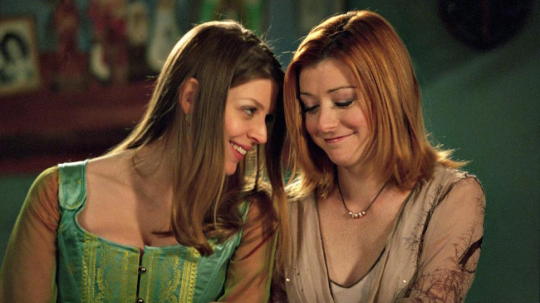




#witch#witches#witchblr#witchcraft#100witches#halloween#samhain#pagan#paganism#wicca#coven#magic#occult#buffy#buffy the vampire slayer#willow#willow rosenberg#alyson hannigan#lesbian#dark willow
1K notes
·
View notes